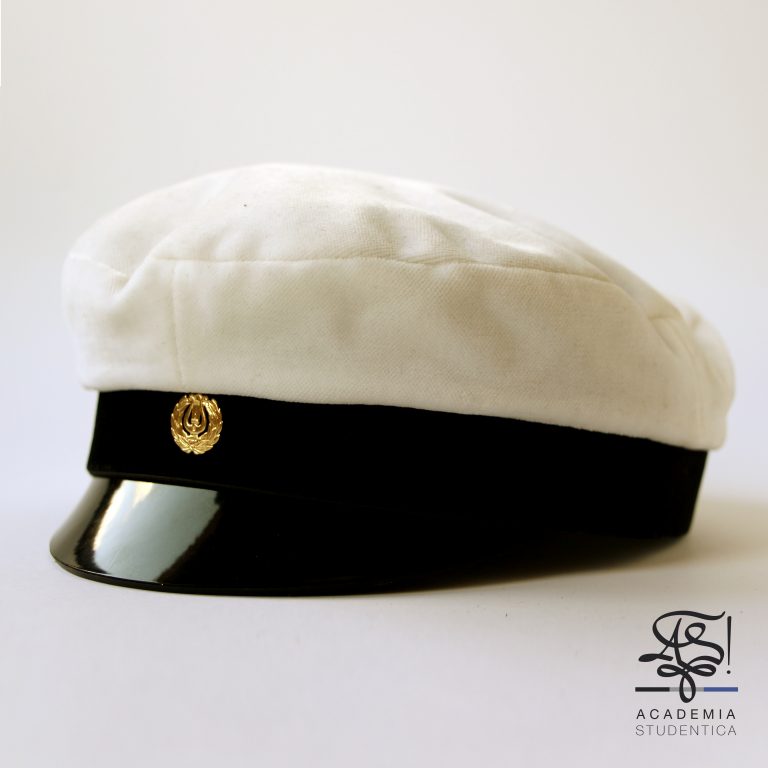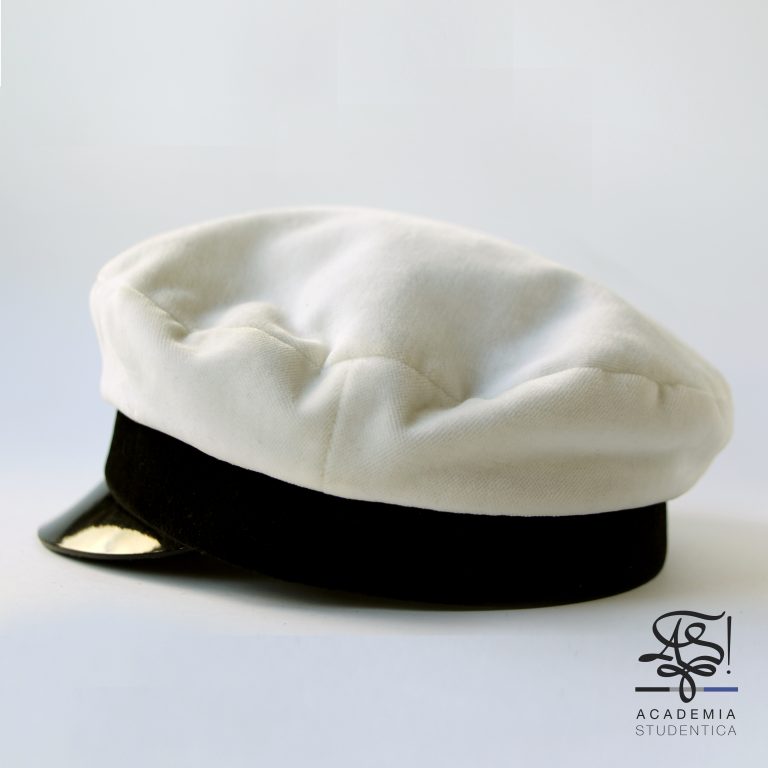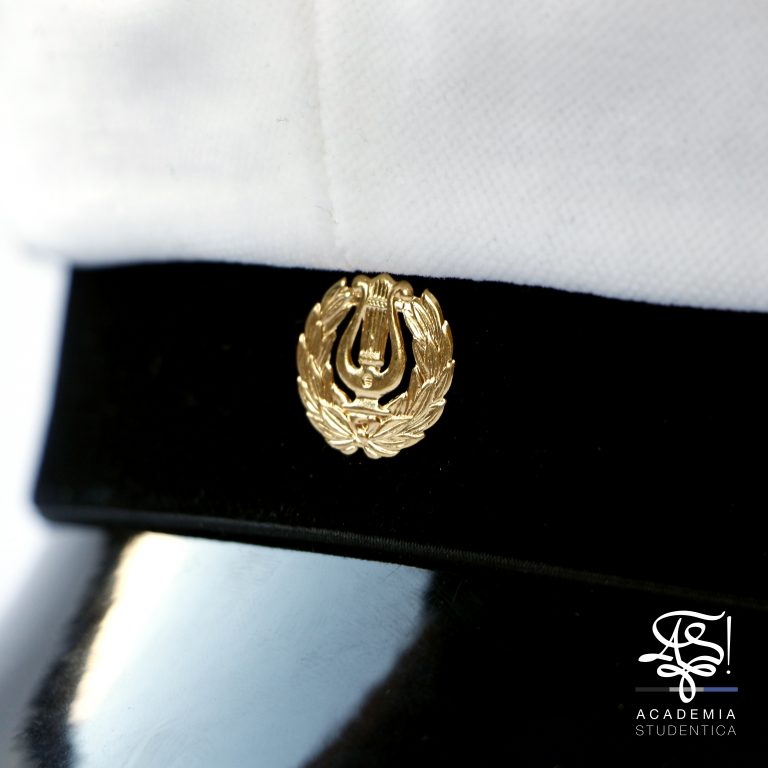Student Cap “ylioppilaslakki”, Finland,
This cap has a white top and a black rim. On the front is a gold-coloured metal harp of Apollo, the symbol of the University of Helsinki because the matriculation exam was conducted at this university until 1917. The cockade is often replaced by the symbol of the wearer’s university. The cap is worn by all high school graduates.
All caps look the same, but you can read a lot from the lining and the size of the cockade. At the end of the 19th century, a language struggle broke out, dividing the academics between Swedish and Finnish speakers. If the cockade is 22 millimetres, you are dealing with a Swedish-speaking student. 16 millimetres for a moderate Finnish-speaking student and at 14 millimetres you have a radical Finnish-speaking student in front of you. From the lining of the cap you used to be able to deduce the origin of the wearer, who adapted it to the colours of his “Natio”; a custom still popular in Satakunta and North Karelia. Nowadays the lining is mostly white-blue, as a symbol of general patriotism. However, Swedish-speaking students choose red and yellow, or blue-yellow-white. The Swedish speaking students from Ostrobothnia use black, yellow and red.
Casquette d’étudiant “ylioppilaslakki”, Finlande.
Coll. : Cap’n
Cette casquette est blanche avec un bord noir. Sur l’avant se trouve une harpe d’Apollon métallique dorée, symbole de l’Université d’Helsinki car l’examen d’entrée a été passé dans cette université jusqu’en 1917 (?). La cocarde est souvent remplacée par le symbole de l’université de celui qui la porte. La casquette est portée par tous les diplômés du secondaire.
Toutes les couvrechefs se ressemblent, mais vous pouvez en savoir beaucoup sur la doublure et sur la taille de la cocarde. À la fin du XIXe siècle, la lutte linguistique a éclaté et les universitaires se sont divisés entre locuteurs suédois et finnois. Si la cocarde mesure 22 millimètres, vous avez face à vous un étudiant suédophone. Si elle mesure 16 millimètres, un étudiant finnophone modéré et à 14 millimètres vous avez un étudiant finnophone radical. Dans la doublure du couvrechef vous trouverez l’origine du porteur, qui l’ajuste aux couleurs de sa “Natio”; une utilisation encore populaire à Satakunta et en Carélie du Nord. De nos jours, la doublure est généralement blanc-bleu, en tant que symbole du patriotisme général. Les étudiants suédophones optent cependant pour le rouge et le jaune ou le bleu-jaune-blanc. Les étudiants suédois d’Ostrobotnie utilisent le noir, le jaune et le rouge.
Studentenpet “ylioppilaslakki”, Finland.
Coll.: Cap’n
Deze pet is wit met een zwarte rand. Op de voorzijde staat een goudkleurige metalen harp van Apollo, het symbool van de Universiteit van Helsinki omdat het toegangsexamen aan deze universiteit werd afgenomen tot 1917 (?). De kokarde wordt vaak vervangen door het symbool van de universiteit van de drager. De pet wordt door alle afgestudeerden van de middelbare school gedragen.
Alle petten zien er hetzelfde uit, maar aan de voering en aan het formaat van de kokarde kan je veel aflezen. Eind 19de eeuw stak de taalstrijd de kop op, en verdeelde de academici tussen Zweeds en Fins sprekenden. Is de kokarde 22 millimeter, heb je te maken met een Zweeds sprekende student. 16 millimeter voor een gematigde Fins sprekende student en bij 14 millimeter heb je een radicaal Fins sprekende student voor je. Uit de voering van de pet leidde je vroeger de afkomst van de drager af, die deze aanpaste aan de kleuren van zijn “Natio”; een gebruik dat nog steeds populair is in Satakunta en Noord Karelia. Tegenwoordig is de voering meestal wit-blauw, als symbool van algemeen patriottisme. De Zweeds sprekende studenten kiezen echter voor rood en geel, of blauw-geel-wit. De Zweeds sprekende studenten uit Ostrobothnia gebruiken zwart, geel en rood.


